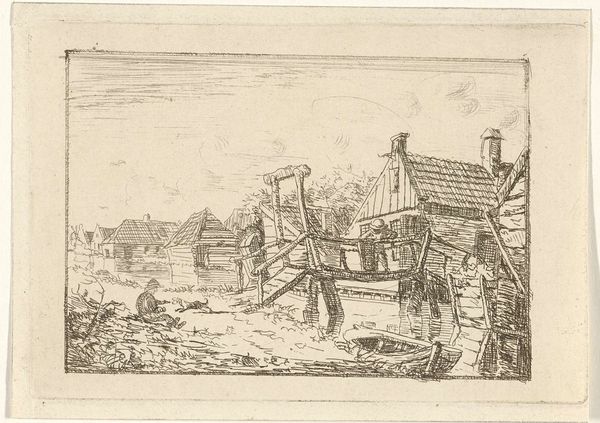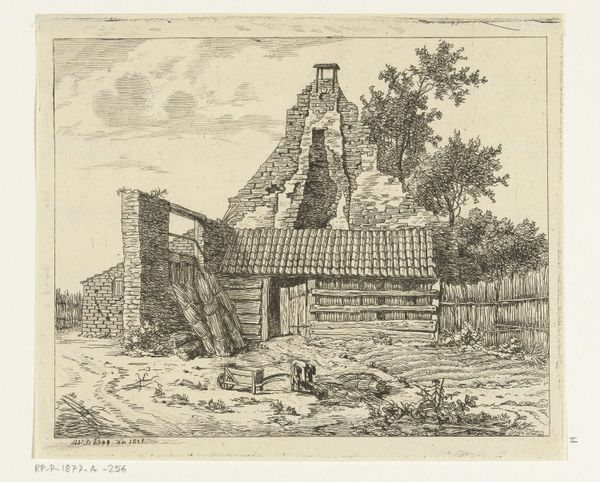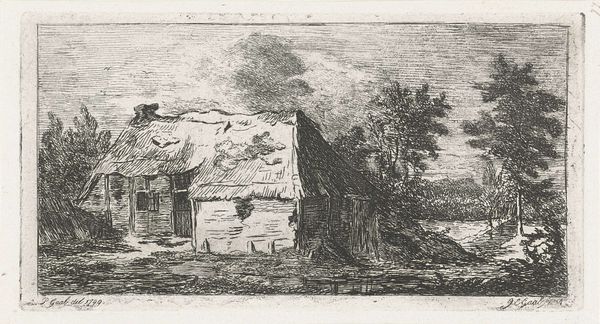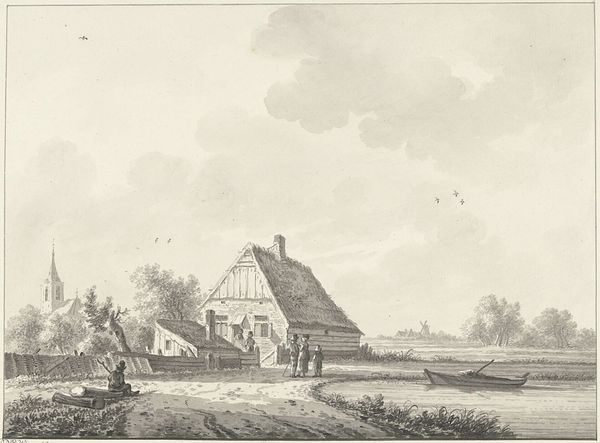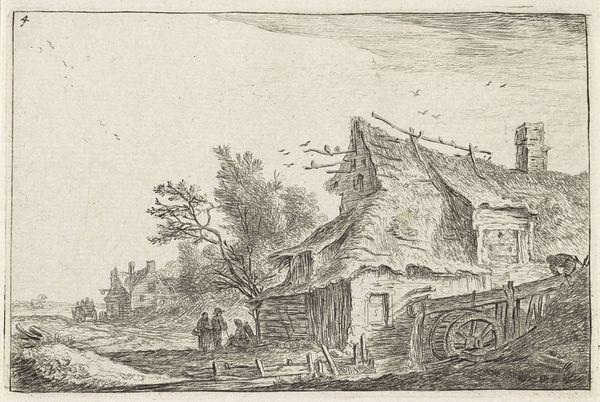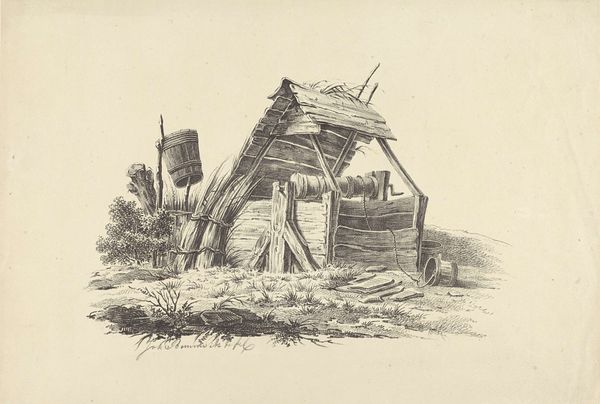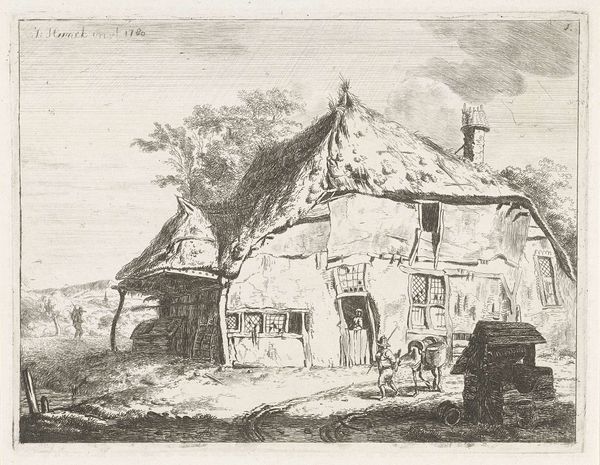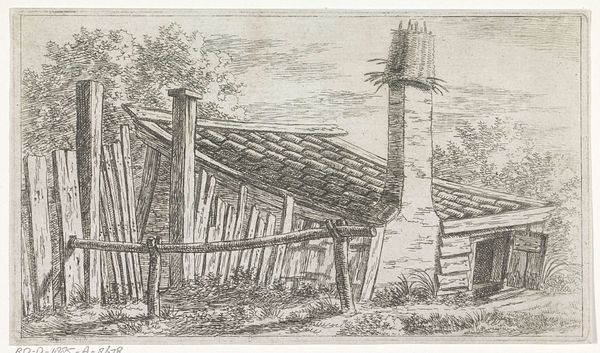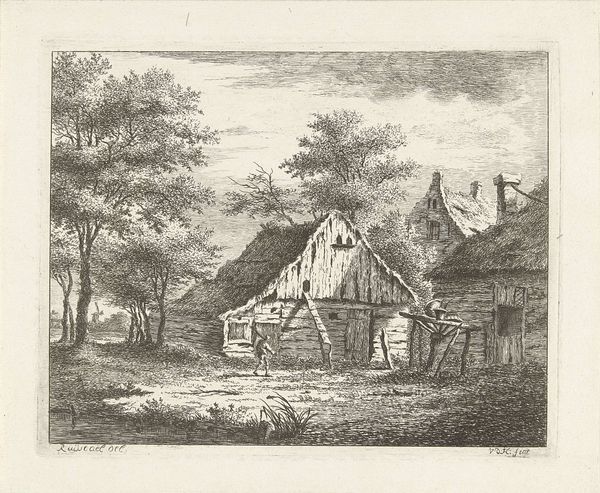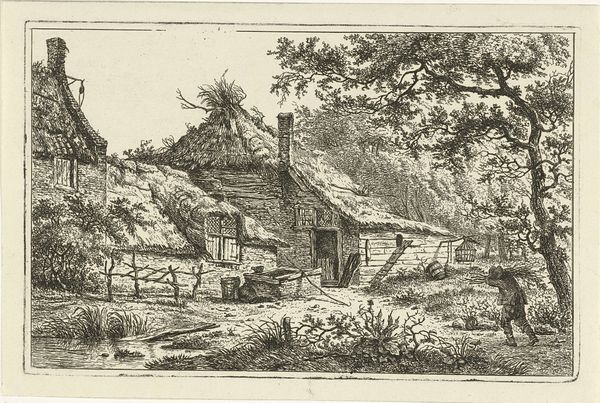
drawing, print, etching
#
landscape illustration sketch
#
drawing
#
quirky sketch
#
dutch-golden-age
#
mechanical pen drawing
# print
#
pen illustration
#
pen sketch
#
etching
#
pencil sketch
#
landscape
#
personal sketchbook
#
pen-ink sketch
#
pen work
#
sketchbook drawing
#
genre-painting
Dimensions: height 218 mm, width 265 mm
Copyright: Rijks Museum: Open Domain
Curator: Before us is a print titled "Buiten de Raampoort," an etching likely made sometime between 1773 and 1838 by Anthonie van den Bos. What strikes you initially about it? Editor: The mood is decidedly somber, despite the everyday subject matter. The etching technique gives the whole scene a sort of faded, melancholic air, like a memory. And the composition, all those ramshackle buildings reflected in the still water, conveys a sense of precariousness, wouldn't you say? Curator: I am captivated by the bridge itself; note how it looms. The bridge motif throughout history often suggests a symbolic crossing, a passage between states, perhaps conscious and unconscious realms. I'm thinking of how frequently it shows up in dream imagery, for instance. Editor: And consider where this bridge leads: right back into structures mirroring their own decay. Are we really progressing, or just cycling through decline? The solitary figure fishing emphasizes a quiet, yet palpable anxiety of remaining stagnant within a broken system. Curator: Or perhaps he is content; stillness has a power of its own. The fishing rod might itself be a symbol, reaching into the depths for hidden meanings or lost connections. Genre paintings from the Dutch Golden Age always bring up social divisions: wealth vs. poverty, progress versus traditional lifeways. Is this lone fisherman resisting the societal currents, content to live outside of them? Editor: Precisely. This is where the "Raampoort," the city gate, is so crucial to understanding the work as social critique. By situating this scene "outside" the gate, van den Bos comments on those marginalized populations living beyond the direct benefits or controls of the city proper. The Raampoort was not just a physical division but a symbolic one. Curator: That makes perfect sense when contemplating van den Bos' possible motivations and the symbols present. He's drawing attention to those just outside the structures of power, and inviting us to think of the "other." Editor: Indeed. And in that quiet scene, outside the gate, we're forced to confront uncomfortable truths about who gets left behind and the price of so-called progress. Curator: Thank you for connecting this art piece to the human stories woven through symbolic imagery. It adds profound richness. Editor: It's been an honor to highlight those nuances! Perhaps those listening can examine how societal progress affects marginal demographics within their own society.
Comments
No comments
Be the first to comment and join the conversation on the ultimate creative platform.
